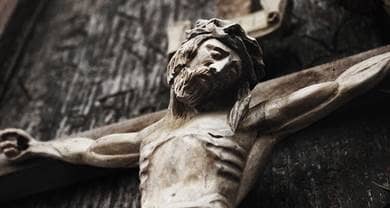- Trending:
- Pope Leo Xiv
- |
- Israel
- |
- Trump
- |
- Social Justice
- |
- Peace
- |
- Love

RELIGION LIBRARY
Roman Catholicism
Beginnings
Christianity developed within what historians call a Jewish matrix: the context of Judaism in Palestine, a Roman province, in the 1st century C.E. Indeed, at first Christianity was so closely tied with Judaism that it is best to speak of a Jesus community comprised of Jews and Gentiles for several decades. Some scholars prefer to see Mary, Jesus' mother, and his first followers as Jewish-Christians, admittedly a bit of an awkward phrase, because they were Jews who believed Jesus to be the promised messiah, unlike other Jews. In Jerusalem, these Jewish followers of Jesus were called Nazarenes, denoting their faith in Jesus of Nazareth. These first Jewish-Christian followers of Jesus lived a kind of hybrid faith life: believing in Jesus as savior and messiah, though still meeting to pray in synagogues and continuing certain Jewish practices, such as keeping kosher and celebrating the Jewish calendar of feasts, even as they reached out to others.
Soon after Jesus' passion in 29 or 30 C.E., and during the first decade or two of Christian belief, it became clear that one could be a Christian without being a Jew. This was clearly decided at the so-called Council of Jerusalem in 49 or 50 (Acts of the Apostles 15; Galatians 2:1-10). There, the first leaders of Christianity, among them Peter, Paul, and James, decided that one did not have to be a Jew nor go through a Jewish stage to be a Christian. Almost immediately after his conversion, the Pharisee Saul of Tarsus, who later became known as Saint Paul, turned his attention from persecuting the first Christians to converting Gentiles to the faith, as chronicled in Acts of the Apostles and the Pauline epistles making up much of the New Testament.
In this outreach, Paul was assisted especially by Timothy and Barnabas. As the 1st century progressed, Christianity increasingly pulled away from its Jewish roots; by about 100, followers of Jesus adhering to Mosaic law had virtually disappeared. Some Christians stressed their differences from Judaism quite starkly in words that ring of what we call today anti-semitism, as in the anonymous Letter to Diognetus, where the author asserts that Christianity surpassed and fulfilled Judaism.
Even though Christianity was now a distinct faith, Roman officials often lumped Jews and Christians together, if only because both monotheistic faiths were alien to Greco-Roman polytheism. Judaism had been a permitted religion known as a religio licta in Roman legal terms, which offered some protection and freedom of worship as long as Jews paid taxes and did not revolt. Christianity did not enjoy that same permitted status, nor did Christianity have a structured life of its own, so it was only natural that it borrowed from its Jewish roots with rabbis and elders leading communities, adapting them even as it moved away from the Jewish matrix of its origins.
In Christianity's infancy, for example, the word "synagogue," indicating a gathering, was synonymous with the Greek word ekklesia used to denote an assembly of Christians, sometimes referred to as a church and often gathering in someone's home-known as the early house churches. Gentiles, however, could not turn to this same structure and in those earliest years there were no bishops or parishes in a form that we would recognize today, although the roots were already present.
Christians had to establish their own identity not only from Judaism but in the eyes of the Romans, who were inclined to see them as dangerous subversives. They also had to communicate the faith to new believers in what appears as a catechetical process that fused what became baptism, Holy Communion, and confirmation (still today grouped as the sacraments of initiation). A period of as long as three years of probation and learning the Church's core beliefs (known as the kerygma) culminated with a final preparation and testing period during Lent.
Adults were baptized by being immersed in water (usually three times), receiving an anointing with oil, and receiving the Eucharist at the Easter Vigil--a practice restored since Vatican II in the Rite of Christian Initiation for Adults (RCIA). Adult baptism was the norm in the 1st century, although we hear of infant baptism with godparents in the 2nd century. Sunday gradually replaced the Jews' Saturday as the Christian Sabbath, a natural weekly celebration of the resurrection called the Lord's Day.
Within just a decade of Jesus' life, services included a reading aloud of letters (such as Paul's) from other Christian communities, and then moral exhortation from a leader. A period of scripture study was joined with a friendly meal (agape) before the Eucharistic celebration, but by 100 the two were separated, with the Eucharist assigned to Sunday morning and the agape meal with scripture study to Saturday or Sunday evening. These two liturgies, of word and Eucharist, fused over time, but the combination may have existed in a recognizable Mass by the early 2nd century.
Study Questions:
1. How did Christianity develop out of a Jewish matrix? When did Christianity separate itself from Judaism?
2. Why was Christianity’s identity intermingled with Judaism in its infancy?
3. How did ritual serve as an agent of identity to the Christian faith?










